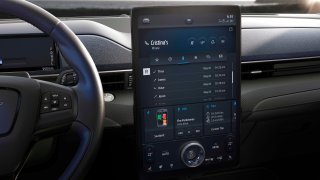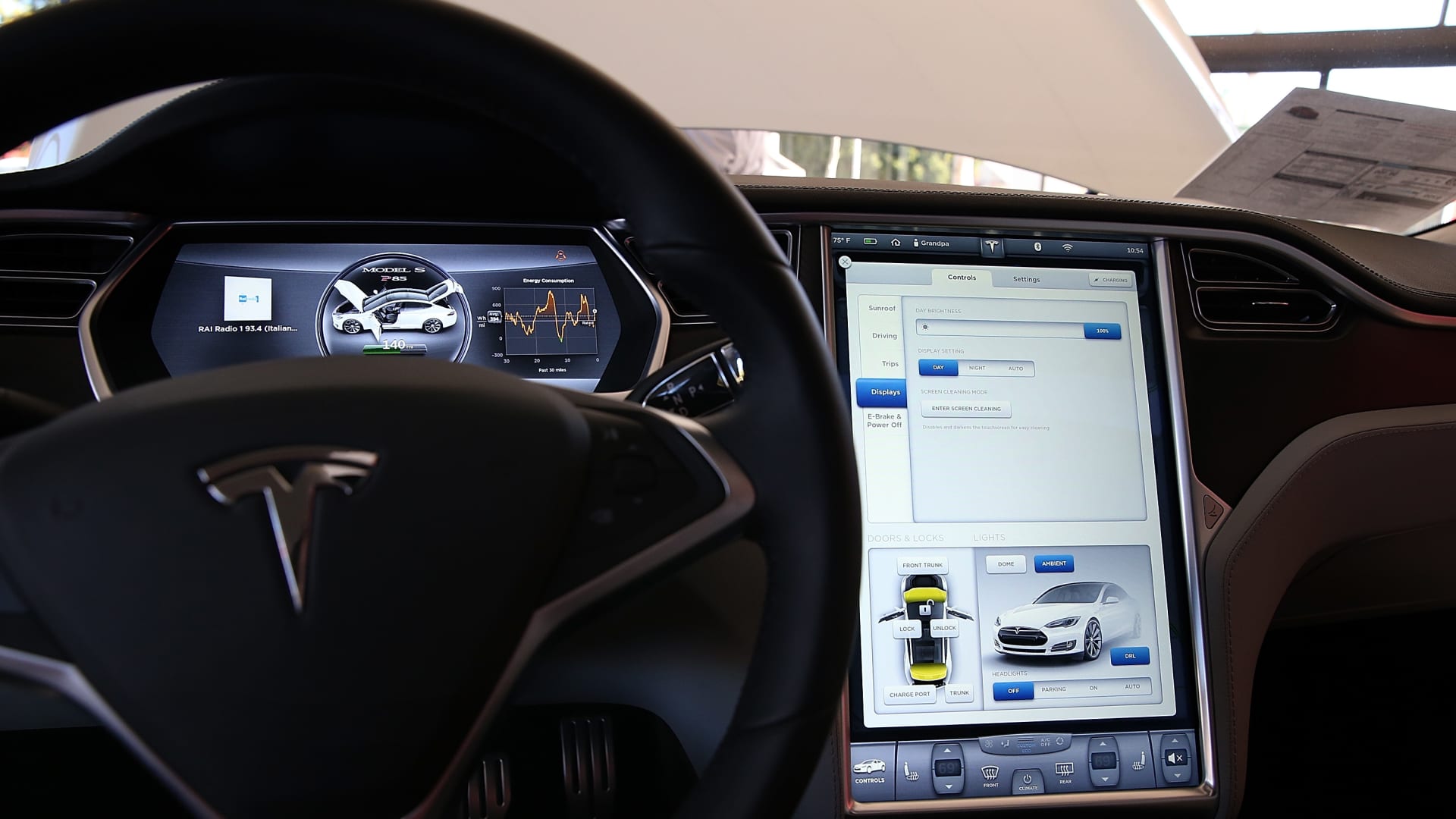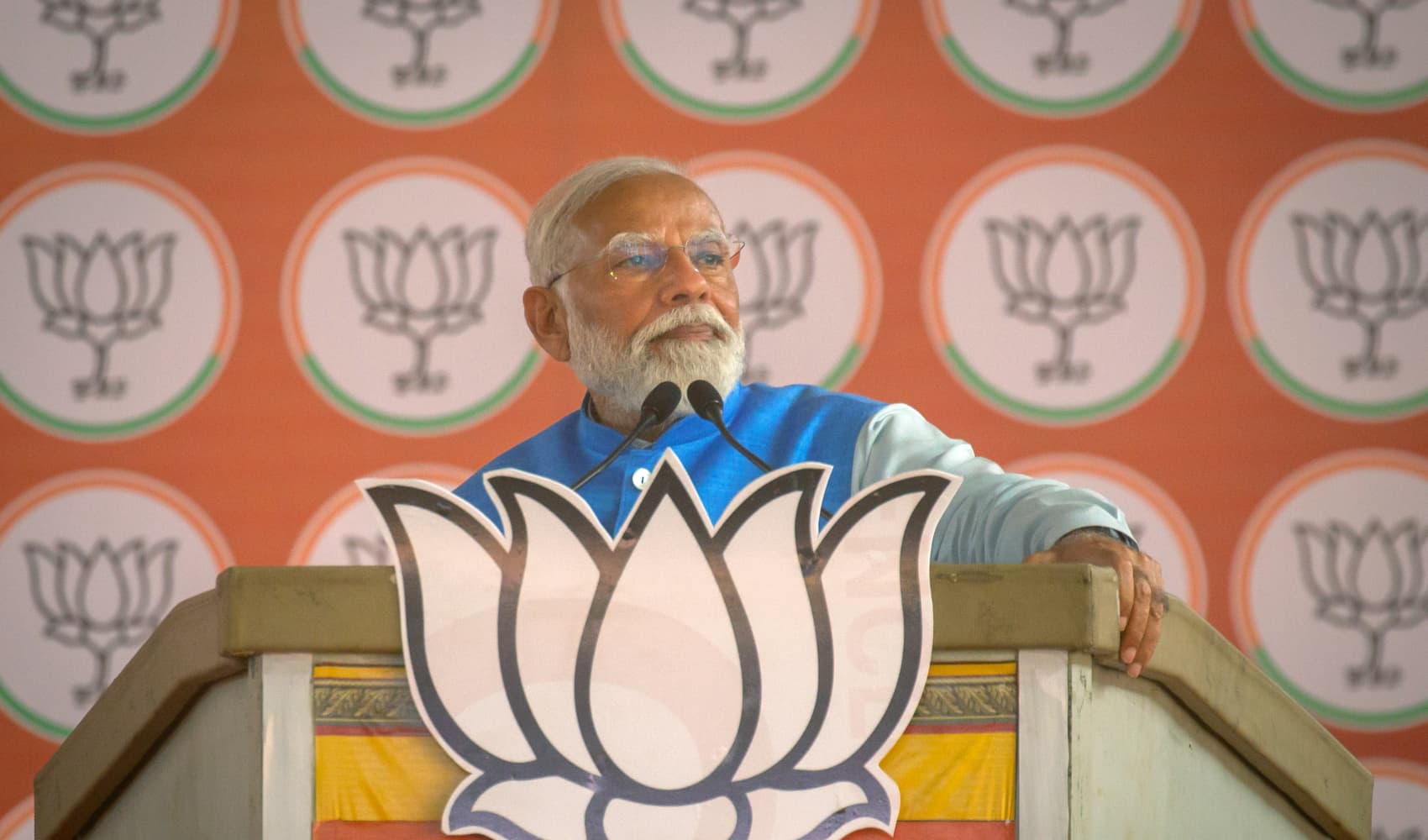
- Tesla is credited with pressuring legacy automakers like GM and Ford to accelerate plans for all-electric vehicles.
- Musk and his company also have been ahead of the curve regarding social media engagement, in-vehicle technologies such as over-the-air updates and localized production of battery cells.
- GM and Ford aren't taking everything from Tesla's playbook, especially when it comes to manufacturing and engineering.

DETROIT – "Respect…." It was a simple statement by Ford Motor CEO Jim Farley acknowledging Tesla CEO Elon Musk's tweet saying the two companies were "the only American carmakers not to have gone bankrupt out of 1000's of car startups."
Farley's retweet of Musk earlier this month was a jab at his Detroit rivals, while also recognizing what Tesla has been able to accomplish. Ford has often touted its survival of the Great Recession, after crosstown rivals General Motors and then-Chrysler, now a part of Stellantis, went bankrupt in 2009.
Get a weekly recap of the latest San Francisco Bay Area housing news. Sign up for NBC Bay Area’s Housing Deconstructed newsletter.
It was also one of the latest examples of executives at legacy automakers showing Musk some appreciation. They've also adopted at least some of his company's strategies to catch up to Tesla's electric vehicle sales the world over.
"What I take away from Tesla's success is that there's a huge market for EVs and they validated that," GM CEO Mary Barra said during an online discussion Thursday for The Economic Club of New York's Women in Business event.
Tesla is credited with pressuring legacy automakers to accelerate plans for all-electric vehicles, but Musk and his company also have been ahead of the curve on other technologies, such as over-the-air software updates and localized production of battery cells.
Here's what they're taking from Tesla's success -- and what they're avoiding.
Money Report
Battery cell production
Tesla has been producing battery cells domestically through a partnership with Panasonic since 2017. It's something GM only recently announced intentions to do, while Ford likes the idea but hasn't announced any actual plans.
"We need to bring battery production to the U.S.," Farley said last month during a Wolfe Research conference. He said it's an "important" issue to assist in logistics and avoid supply chain problems.
Tesla makes the battery packs for its vehicles on one side of its Gigafactory in Nevada, while Panasonic produces cells for them on the other side. However, Tesla told investors in September that it started producing its own cells at a pilot plant in Fremont, California, as well.
Industry insiders, alarmed by the impact of a semiconductor shortage for automakers this past year, have warned a battery cell supply shortage could hit U.S. automakers next, citing the amount of new electric vehicles coming to market. Making cells in-house, or partnering on production like Tesla does is expected to help automakers lock in profits and master production.
"We want to be in control of our own destiny, not only from making sure we have the ability to have the cells that we need but also to work on cost improvements and technology improvements," Barra said during the company's most recent earnings call.
GM is expected to rapidly become a major player in battery cell production through a joint venture with LG Chem. Through their Ultium Cells joint venture, GM and LG are currently spending $2.3 billion for a new battery cell plant in Ohio. The facility is expected to be completed in 2022.
GM earlier this month also confirmed it is already evaluating locations for a second plant, highlighting the importance GM is putting on ramping-up production of battery cells in the U.S. It also disclosed a deal last week with a Massachusetts Institute of Technology spinout for joint development of next-generation electric vehicle batteries that are expected to cut the cost of the technology by 60%.
German automaker Volkswagen on Monday said it plans to build six battery cell production plants in Europe by 2030. It also called the plants "gigafactories," taking a page straight out of Tesla's playbook, as part of a "Power Day" highlighting the company's push into EVs. The event was compared by some to Tesla's "Battery Day."
Tech
If imitation is the highest form of flattery, Musk must have been blushing when Ford debuted the all-electric Mustang Mach-E crossover. The vehicle was instantly compared to the Tesla Model Y, specifically for its performance and modern and minimalistic, large-screened interior.

The major difference in the interior of the Mach-E compared to the Model Y is the addition of a driver-mounted screen for information. Tesla's Model Y only has one center-mounted screen.
Aside from its interior design, the Mustang Mach-E also features over-the-air, or remote, updates – an emerging trend in the automotive industry pioneered by Tesla.
While GM had over-the-air, or OTA, connectivity in its vehicles for decades through its OnStar division, Tesla has been making significant changes remotely to its vehicles since 2012, including vehicle characteristics. That's something most automakers have only recently expressed an interest in doing.
On EV charging, Tesla has its own "Supercharger" network. Automakers such as GM and Ford have shown no interest in owning their own public charging networks. Instead, they've announced partnerships with companies specializing in EV infrastructure such as ChargePoint, Volta Charging or Volkswagen subsidiary Electrify America.
Autopilot
A technology the Mach-E didn't attempt to match on the Model Y was its autopilot driver-assist system. It instead took a page from GM's playbook.
GM's Super Cruise driver-assist system uses facial recognition to determine whether drivers are or aren't paying attention. The monitoring also makes it so drivers don't have to "check-in" by touching the steering wheel like in Tesla vehicles.

The monitoring system lowers the risk of the feature being abused. Some Tesla drivers have figured out workarounds to "check-in," allowing them to be less attentive or even leave the driver seat and move into other areas of their vehicle.
Ford's Mach-E and other vehicles are expected to feature a similar facial recognition system to GM's starting later this year. Both Ford and GM systems can only be used on pre-mapped highway roadways.
Tesla's system can be used on highways and city streets. It also does not utilize pre-mapped roadways, instead relying on a redundant system of onboard cameras, radars and other sensors to drive the vehicle when engaged.
The National Transportation Safety Board on Friday called for stronger federal requirements for the design and use of automated driving systems on public roads in the U.S., and it's citing Tesla's practices and system design as an example of why this is needed.
Manufacturing
No company is perfect at manufacturing vehicles, but GM and Ford consider themselves pretty well-versed when it comes to mass producing cars and trucks.
While Tesla has substantially grown its production in recent years, including a new plant in China, it had to go through Musk's self-proclaimed "production Hell" and is still learning a few things.
For example, Tesla last month agreed to recall 134,951 Model S and Model X vehicles in the U.S. due to touchscreen failures that could lead to the loss of several safety-related features while driving.

The root of Tesla's problem with the screens is some of the parts weren't what the industry calls "automotive grade." While there's no set definition, they're typically parts that go through rigorous testing and are meant to last at least 10 years or 150,000 miles, if not the lifetime of the vehicle.
Tesla, in a letter to federal regulators in January, said the malfunctioning part in the screen were only expected to last five to six years. That means they were not automotive grade, a cornerstone of production for most automakers.
"This was a bad decision on Tesla's part. They never should have used this component in this way," said Sam Abuelsamid, an engineer and principal research analyst at Guidehouse Insights. "Electronics are intended to last the life of the vehicle. They are not intended to be ever be replaced through the lifecycle of that vehicle."
Social media
While Ford's Farley and GM's Barra have increasingly used social media to share news and engage with followers – which Musk does constantly – they are far more conservative compared with the Tesla and SpaceX CEO. They've also avoided drawing the ire of the Security and Exchange Commission.
In September 2018, Musk was sued by the Securities and Exchange Commission for allegedly making "false and misleading" statements and failing to properly notify regulators of material company events. It was in response to Musk's now-infamous tweet he had secured funding to potentially take the company private at $420 a share.
Days after the SEC filing, the two sides announced a settlement that included $40 million in fines and Musk relinquishing his role as chairman for at least three years. The fines were split evenly between Musk and Tesla.
Farley, who joined Twitter in March 2019, has increased his presence on the platform since becoming CEO in October. He also used the platform during the early days of the coronavirus pandemic to spread some laughter using memes of his late cousin, Chris Farley, a comedian who rose to stardom through NBC's "Saturday Night Live" and a series of movies in the 1990s.
Farley has more than 31,000 followers, while Barra has 55,500. That compares to Musk, who joined in June 2009 and has 49 million followers.






